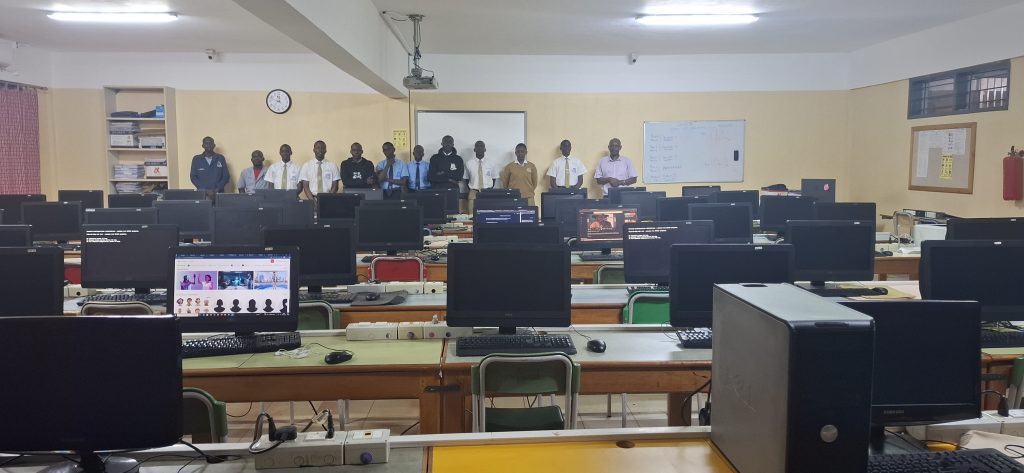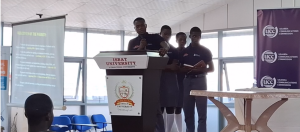Understanding AI Models — From Machine Learning to Large Language Models (LLMs)

Artificial Intelligence (AI) is not one single technology. It is a family of approaches that learn and act in different ways. To truly use AI with competence, we need to understand the key types of models—what they can do, where they fail, and how they are already shaping life in Uganda.
1) Machine Learning (ML): Teaching computers from data
Machine Learning is the backbone of most AI systems today. Instead of programming step-by-step rules, we feed the computer large amounts of examples (data), and it “learns” to recognise patterns.
- Example in Uganda: An ML model trained on photos of cassava leaves can learn to detect early signs of mosaic disease. Farmers upload a picture, and the model compares it to thousands of known cases, predicting whether the plant is sick.
- Strength: It adapts as more data comes in. The more images collected locally (from Ugandan farms), the better it works.
- Limitations: If trained only on data from Asia or Europe, it may misdiagnose Ugandan crops due to different soil, light, or camera quality.
ML is powerful, but its accuracy is only as good as the quality and diversity of the data it learns from. This is why African contexts must produce their own datasets, not just borrow global ones.
2) Deep Learning: Layers of artificial “neurons”
Deep Learning is a specialised branch of ML that uses artificial neural networks with many layers. Each layer processes the input (like pixels, sounds, or text), and together they can handle very complex tasks.
- Example: In Kampala, deep learning can power facial recognition used in traffic systems to catch boda riders without helmets. In education, deep learning enables speech-to-text apps that transcribe a teacher’s lecture into written notes.
- Strength: Handles images, speech, and natural text better than classical ML.
- Limitations: Requires massive amounts of data and computing power—training a deep model can cost more than most Ugandan schools can afford.
Think of it like a child learning not only to identify “a dog” but also to distinguish between a German shepherd, a mongrel, or even a cartoon drawing of a dog—because the model has passed information through many “layers” of abstraction.
3) Large Language Models (LLMs): Predicting words like humans
LLMs, such as GPT (which powers ChatGPT), are trained on billions of words from books, articles, websites, and conversations. They predict the next word in a sentence, which surprisingly allows them to write essays, translate languages, generate code, or even tutor students.
- Example in schools: An ICT club member can ask an LLM, “Explain photosynthesis in Luganda,” and the AI will generate a step-by-step explanation in the local language.
- Example in business: A startup in Jinja can use an LLM to draft customer emails or social media posts, saving time and cost.
- Strength: Extremely versatile—can write, summarise, brainstorm, and translate.
- Limitations: Sometimes “hallucinates” (makes up facts), inherits biases from its training data, and needs strong internet plus computing resources to run large versions.
LLMs are like extremely well-read assistants—but they don’t “understand” in the human sense. They work on probabilities of words, not true reasoning. This is why critical review of their output is non-negotiable.
4) Hybrid AI: Combining models for real-world use
Most real AI systems today mix different approaches. A health chatbot may use:
- ML for classifying symptoms,
- Deep Learning for recognising medical images, and
- An LLM for responding in natural conversation.
This hybrid design ensures that systems are both powerful and user-friendly. For Uganda, hybrid AI can enable localised solutions: e.g., an agriculture assistant that uses ML to identify maize diseases, then an LLM to explain the treatment in Lusoga.
5) Why this matters for ICT clubs
By distinguishing between ML, Deep Learning, LLMs, and hybrids, our learners:
- Avoid overhyping AI (not all models can “think” like humans).
- Understand where bias enters (training data, model design, or outputs).
- Learn to choose the right tool for the right problem.
- Prepare to build their own simple models—starting with ML projects on free platforms, before progressing to coding and eventually experimenting with open-source LLMs.
📌 Practical activity for ICT clubs:
- Start with an image classification project: train a simple ML model (using tools like Teachable Machine) to recognise two types of Ugandan fruits (e.g., mango vs. matooke).
- Compare it to an LLM task: ask ChatGPT or another model to “write a Luganda poem about mangoes and matooke.”
- Discuss: Which AI is better for vision tasks? Which is better for language? What are the strengths and weaknesses of each?






